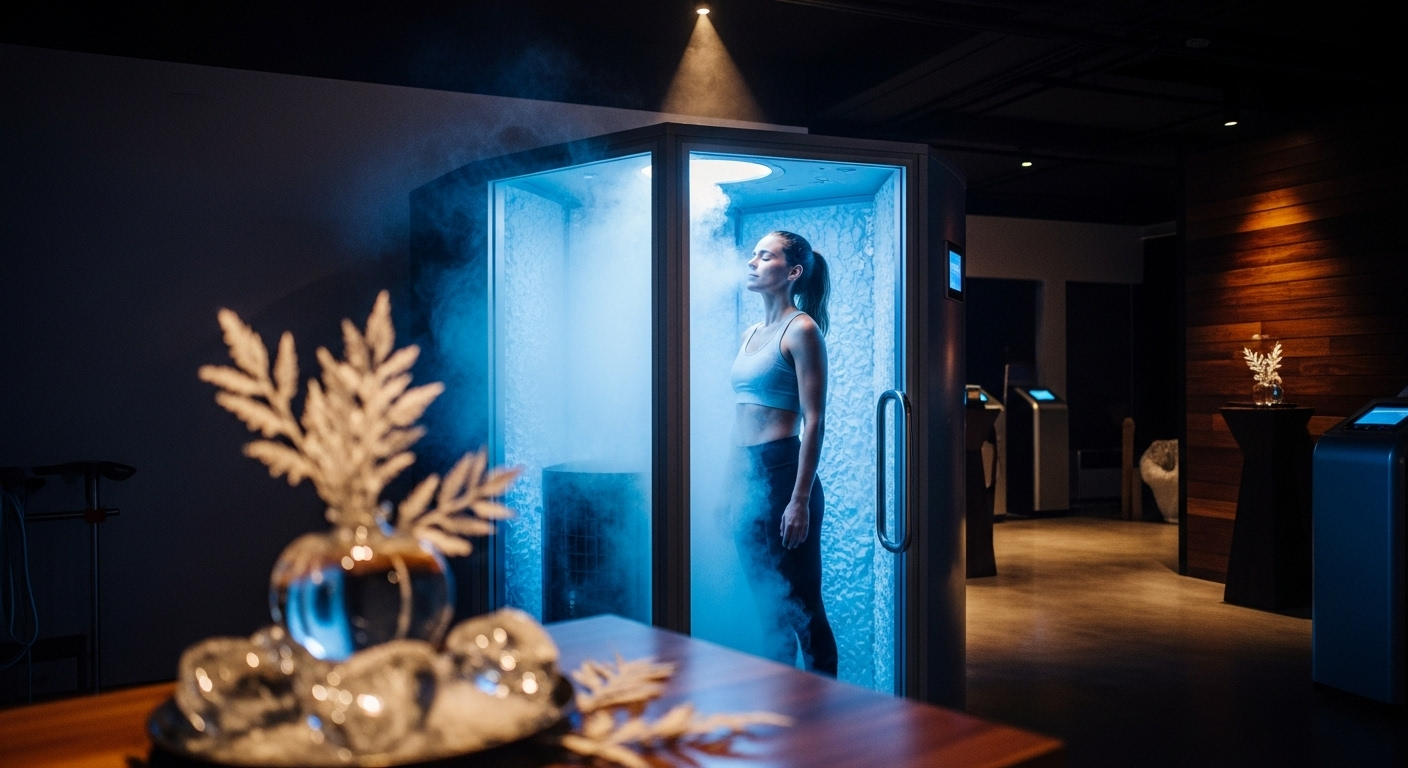Cryotherapy: The Cold Truth About Beauty's Coolest Trend
In the ever-evolving world of beauty and wellness, a chilling new practice has emerged, captivating the attention of celebrities, athletes, and health enthusiasts alike. Cryotherapy, the art of exposing the body to extremely low temperatures for short periods, has rapidly gained traction as a cutting-edge treatment promising a myriad of benefits. From reducing inflammation and boosting metabolism to enhancing skin appearance and accelerating muscle recovery, this icy intervention has sparked a revolution in the beauty and fitness industry. As more spas and wellness centers incorporate cryotherapy chambers into their offerings, it's crucial to delve deeper into the science, history, and potential impacts of this cool phenomenon.

A Frosty Timeline: The Evolution of Cryotherapy
While the concept of using cold for therapeutic purposes dates back to ancient civilizations, modern cryotherapy as we know it today has a more recent history. The practice was first developed in Japan in the 1970s by Dr. Toshima Yamauchi, who used cold treatments to help patients with rheumatoid arthritis. Initially focused on medical applications, cryotherapy gradually expanded into the realm of sports medicine and recovery. It wasn’t until the early 2000s that cryotherapy began to gain popularity in the beauty and wellness industry, with the first whole-body cryotherapy chambers introduced in Europe and later spreading to North America and beyond.
The Cold Hard Facts: Scientific Basis and Potential Benefits
The science behind cryotherapy is rooted in the body’s physiological responses to extreme cold. When exposed to subzero temperatures, blood vessels constrict, redirecting blood flow to vital organs. This process is believed to trigger the release of anti-inflammatory molecules and endorphins, while also stimulating the body’s natural healing mechanisms. Some studies suggest that cryotherapy may help reduce muscle soreness, improve joint function, and accelerate recovery from intense physical activity. In the beauty realm, proponents claim that the cold exposure can tighten skin, boost collagen production, and improve circulation, leading to a more youthful appearance.
Chilling Experiences: Cryotherapy in Practice
A typical whole-body cryotherapy session lasts between two to three minutes, during which participants stand in a chamber filled with nitrogen vapor that rapidly cools the air. Protective gear, including gloves, socks, and shoes, is worn to prevent frostbite, while the head remains outside the chamber. Local cryotherapy treatments, on the other hand, target specific areas of the body using handheld devices that deliver a concentrated stream of cold air. These treatments can last anywhere from a few seconds to several minutes, depending on the area being treated and the desired outcome.
The Big Chill: Industry Impact and Market Trends
The cryotherapy market has experienced significant growth in recent years, with the global market size expected to reach $319 million by 2024, according to a report by Grand View Research. This surge in popularity has led to an increase in cryotherapy-focused businesses, from standalone cryotherapy centers to traditional spas and gyms incorporating cryotherapy services into their offerings. The trend has also sparked innovation in at-home cryotherapy devices, allowing consumers to experience cold therapy in the comfort of their own homes. As the industry expands, regulatory bodies are beginning to take notice, with some countries implementing guidelines and safety standards for cryotherapy practices.
Icy Reception: Controversies and Concerns
Despite its growing popularity, cryotherapy is not without its critics and concerns. The U.S. Food and Drug Administration (FDA) has not approved whole-body cryotherapy for any medical purpose, citing a lack of evidence to support many of the claimed benefits. Some experts warn that the extreme cold exposure could pose risks, particularly for individuals with certain health conditions. There have also been rare cases of injuries related to improper use of cryotherapy equipment or inadequate safety protocols. As the industry continues to grow, addressing these concerns and conducting further research will be crucial in establishing cryotherapy as a legitimate and safe practice in the beauty and wellness sphere.
Frosty Future: The Evolving Landscape of Cryotherapy
As cryotherapy continues to gain momentum, the industry is poised for further innovation and expansion. Researchers are exploring new applications for cold therapy, including its potential role in mental health treatment and cognitive enhancement. Advancements in technology are likely to lead to more sophisticated and personalized cryotherapy experiences, with AI-powered systems adjusting treatments based on individual physiological responses. The integration of cryotherapy with other wellness practices, such as meditation or light therapy, may also emerge as a trend in holistic health approaches.
In conclusion, cryotherapy represents a fascinating intersection of ancient wisdom and cutting-edge technology in the pursuit of beauty and wellness. While the jury is still out on some of its claimed benefits, the growing interest in this icy intervention suggests that cryotherapy is more than just a passing fad. As research continues and the industry evolves, cryotherapy may well cement its place as a staple in the beauty and fitness landscape, offering a cool new dimension to our quest for health and vitality. Whether you’re an athlete seeking faster recovery, a beauty enthusiast looking for the next big thing, or simply curious about the power of cold, cryotherapy invites us to explore the potential benefits of embracing the chill.





